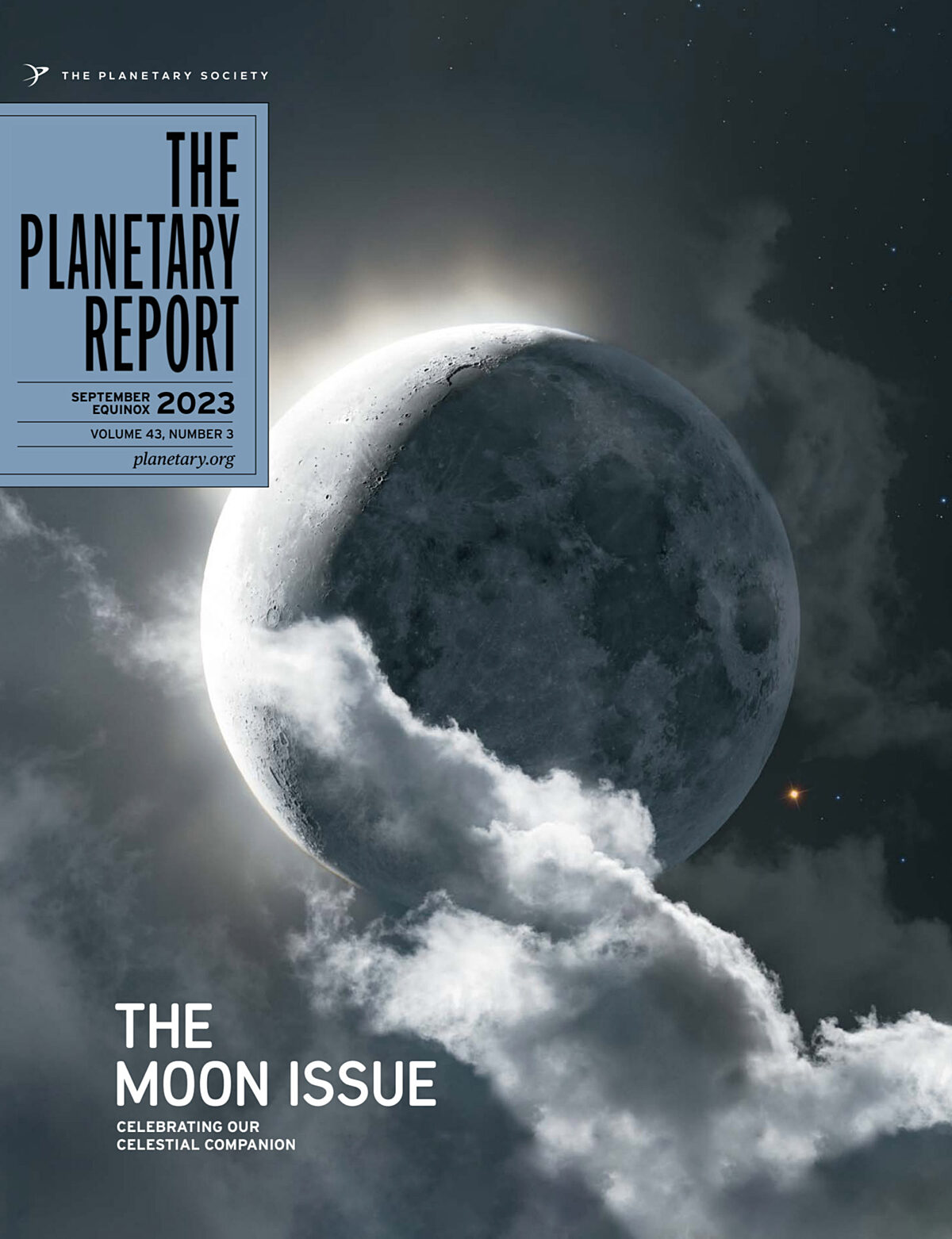Moonstruck
The planets of our Solar System are named after deities. In Roman mythology, Mars was the god of war, for example, and Pluto was the god of the underworld. Moons are mostly named after figures related to the host planet’s mythological namesakes, like Europa, who was the consort of the god Jupiter. But Earth’s Moon has a different story. Unlike most other celestial bodies that are named after unrelated deities, the Moon itself has been considered a god figure by many cultures for millennia.
The ancient Romans called this deity Luna, and the Greeks called her Selene (often associated with another goddess, Artemis, namesake of NASA’s lunar exploration program today). In Hindu mythology, the Moon is personified as the god Chandra and in China, as the goddess Chang’e. The Incas called her Mama Quilla, and the Aztecs called her Mētztli. In ancient Yemen, people worshiped the moon god Ta’lab. The list goes on and on.

In many of these cultures’ mythologies, the Moon has a role in the creation of the world or of human life. In many cases, the Moon is the partner of the Sun and sometimes its enemy. Across the board, the Moon shows up in myths as a powerful, influential, and often mysterious figure.
The Moon holds such a special place in human culture because it has always been with us. It is a striking feature of the sky whether appearing during the day or at night. It shows up in different but dependable ways, marking the passage of time with its movements and changing face. The Moon affects the land, water, plants, and animals. And every so often, it turns blood red or obscures the Sun. With such a dynamic and powerful nature, it’s no wonder people looked to the Moon and thought it had to be more than just a rock in the sky.
Today, we know so much about the science of the Moon that to some, it may have lost its mystery. But its meaningfulness to human culture can still be seen in the language we use.

The English word “month,” for example, comes from the Old English “mōnath,” related to “mōna,” meaning moon — no great surprise considering the length of a month is about the length of a lunar cycle. The words “lunatic” and “lunacy” come from the Latin root “luna,” meaning “moon.” You see the same thing in other Latin-based languages, like Italian, French, and Portuguese. But that’s not all; the Dutch, Russian, and German words for “lunatic” all stem from the words for “moon” in those languages as well. These etymologies reflect the long-held belief that human behavior was affected by the cycles of the Moon — the root of the werewolf myth.
The Moon also holds a special place in the language of romance. You might find yourself mooning over a crush or promising your new sweetheart the Moon, planning a romantic walk in the moonlight, or going on your honeymoon. It’s hard to avoid Earth’s natural satellite when you’re in love.
Although how we think about the Moon has changed over millennia, what remains constant is its place in Earth’s cultures. As we explore and maybe even build settlements on our celestial neighbor, there’s no doubt that the Moon will take on new meaning in the words and stories of future cultures.
Support our core enterprises
Your support powers our mission to explore worlds, find life, and defend Earth. You make all the difference when you make a gift. Give today!
DonateThe Planetary Report • September Equinox
Help advance space science and exploration! Become a member of The Planetary Society and you'll receive the full PDF and print versions of The Planetary Report.


 Explore Worlds
Explore Worlds Find Life
Find Life Defend Earth
Defend Earth


